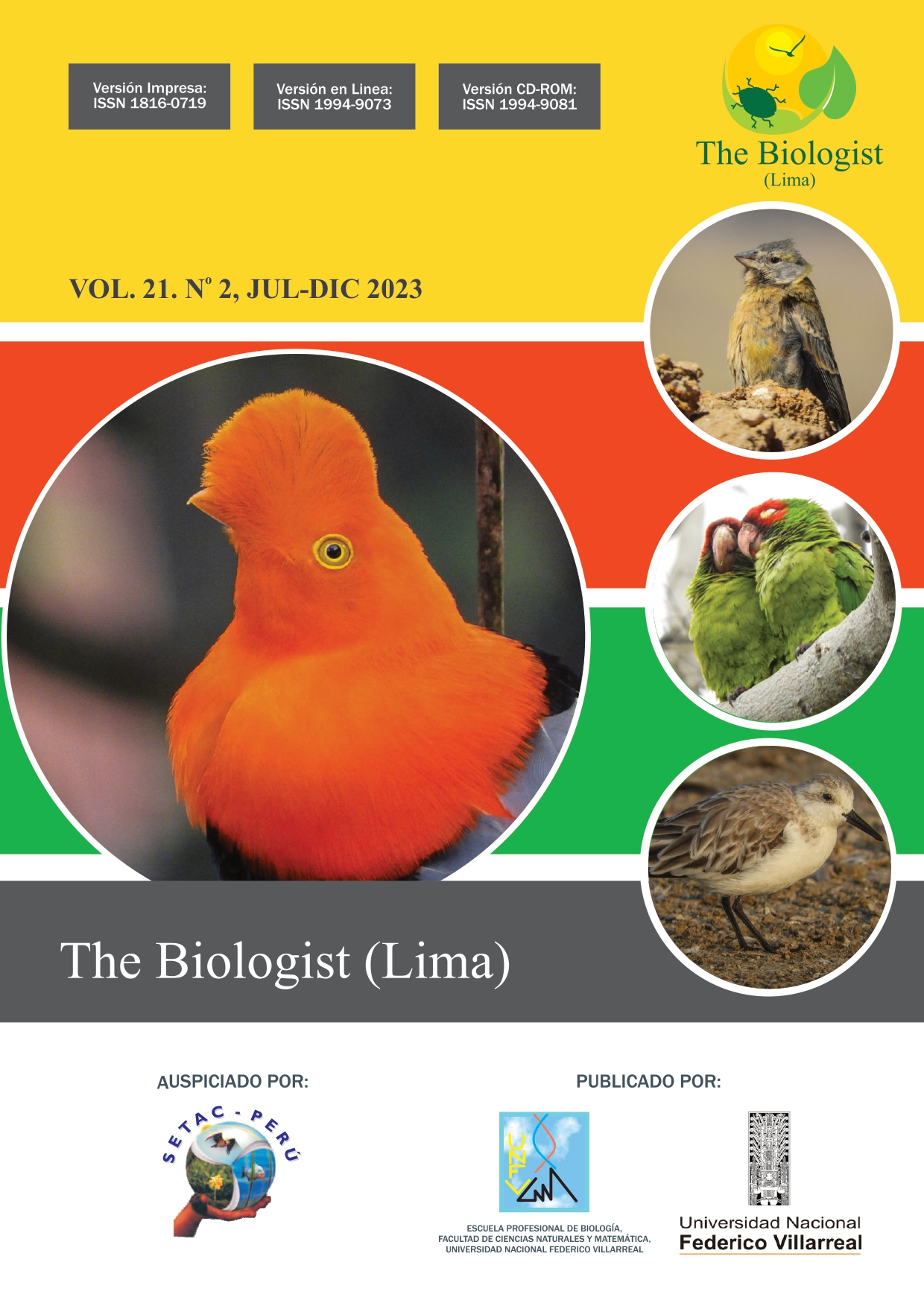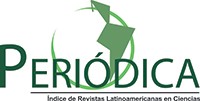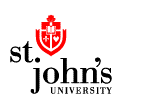Characterization of the mediator in the face of socio-environmental conflicts for ecological restoration
DOI:
https://doi.org/10.24039/rtb20232121625Keywords:
conciliator, ecosystem service, environmental conservation, juridical responsibilityAbstract
Human activity affects ecosystems; therefore, the search for comprehensive actions such as ecological restoration to achieve the Sustainable Development Goals continues to be a necessity. However, a first unfavorable scenario for ecological restoration in various places is socio-environmental conflicts. The solution to these problems requires the guarantee of intermediate actors. The objective was to characterize the mediator of socio-environmental conflicts for ecological restoration. In the scientific literature, the description of the mediator's juridical responsibility is limited. Six characteristics, seven functions and two objectives to be fulfilled by the mediator are considered. Among the aspects pointed out about ecological restoration, it was indicated that it implies a focus on the provision of ecosystem services and restitution in the face of biodiversity loss. Likewise, the mediator's communication is an essential key to the satisfaction of social needs and economic development based on the rational use of natural resources. It is concluded that the mediator represents the third actor during a socio-environmental conflict, but with a neutral position where its characteristics, functions and the objectives to be fulfilled allow the dialogue between the parties to guarantee the continuity of ecosystem services from ecological restoration.
Downloads
References
Ayala, P.LA., Ramos, M.J., & Flores, H.D. (2003). La comunidad de peces de la Laguna de Términos: estructura actual comparada. Revista de Biología Tropical, 51, 783–793.
Borges, J.K.P., Cú-Vizcarra, J.D., Escalona, S.G., & Vargas, C.J.A. (2021). Refugios diurnos del murciélago Rhynchonycteris naso (Chiroptera: Emballonuridae) en Laguna de Términos, Campeche, México. Revista de Biología Tropical, 69, 274–229.
Bryan, B.A., Gao, L., Ye, Y., Sun, X., Connor, J.D., Crossman, N.D., Stafford-Smith, M., Wu, J., He, C., Yu, D., Liu, Z., Li, A., Huang, Q., Ren, H., Deng, X., Zheng, H., Niu, J., Han, G., & Hou, X. (2018). China’s response to a national land-system sustainability emergency. Nature, 559, 193–204.
Buse, K., & Hawkes, S. (2015). Health in the sustainable development goals: ready for a paradigm shift? Globalization Health, 11, 1–8.
Butler, J.R.A., Wise, R.M., Skewes, T.D., Bohensky, E.L., Peterson, N., Suadnya, W., Yanuartati, Y., Handayani, T., Habibi, P., Puspadi, K., Bou, N., Vaghelo, D., & Rochester, W. (2015). Integrating top-down and bottom-up adaptation planning to build adaptive capacity: a structured learning approach. Coastal Management, 43, 346–364.
Chazdon, R.L., Brancalion, P.H.S., Lamb, D., Laestadius, L., Calmon, M., & Kumar, C. (2017). A policy-driven knowledge agenda for global forest and landscape restoration: a policy-driven agenda for restoration. Conservation Letters, 10, 125–132.
Chen, J., Ning, K., Li, Z., Liu, C., Wang, L., & Luo, Y. (2022). The Potential of ecological restoration programs to increase erosion-induced carbon sinks in response to future climate change. Forest, 13, 1–15.
Cousins, J. (2021). Justice in nature-based solutions: research and pathways. Ecological Economic, 180, 1–11.
Echeverría, Á.S., Pérez, C.R., Zaldívar, J.A., Canales, D.J., Brito, P.R., Merino, I.M., & Vovides, A. (2019). Regeneración natural de sitios de manglar degradado en respuesta a la restauración hidrológica. Madera y bosques, 25, 1–14.
Flores, H.D., Ramos, M.J., Ayala, P.L.A., & Gómez, C.F. (2021). Environmental variation vs co-occurrence of two fish families (Gerreidae and Ariidae) in Terminos Lagoon, Campeche, Mexico. JAINA Costas y Mares ante el Cambio Climático, 3, 5–22.
García, R.V., Alpuche, G.L., Herrera, S.J., Montero, M.J., Morales, O.S., Pech, D., Cepeda, G.M.F., & Zapata, P.O. (2013). Towards a coastal condition assessment and monitoring of the Gulf of Mexico Large Marine Ecosystem (GoM LME): Terminos Lagoon pilot site. Environment Development, 7, 72–79.
Guevara, C.E., Brito, P.R., Gelabert, F.R., Amador, D.L.E., López, C.J.E., Endañu, H.E., Ruíz, M.A., Núñez, L.E., Alderete, C.A., Cerón, B.J.G., Cerón, B.R.M., Canedo, L.Y., Gánem, H.E., García, C.A., & Guerra, S.J.J. (2009). Primer simposium para el conocimiento de los recursos costeros del sureste de México y primera reunión mesoamericana para el conocimiento de los recursos costeros. Ciudad del Carmen, Campeche. https://www.academia.edu/en/75516902/Memorias_del_Primer_Simposium_para_el_Conocimiento_de_los_Recursos_Costeros_del_Sureste_de_M%C3%A9xico_y_Primera_Reuni%C3%B3n_Mesoamericana_para_el_Conocimiento_de_los_Recursos_Costeros
Holl, K.D. (2017). Restoring tropical forests from the bottom up. Science, 355, 455–456.
Ives, C.D., Giusti, M., Fischer, J., Abson, D.J., Klaniecki, K., Dorninger, C., Laudan, J., Barthel, S., Abernethy, P., Martín, L., B., Raymond, C.M., Kendal, D., & von Wehrden, H., (2017). Human–nature connection: a multidisciplinary review. Current Opinion in Environmental Sustainability, 26, 106–113.
Kabisch, N., Frantzeskaki, N., & Hansen, R. (2022). Principles for urban nature-based solutions. Ambio, 51, 1388–1401.
Meli, P., Calle, A., Calle, Z., Ortiz, A., C.I., Sirombra, M., & Brancalion, P.H.S. (2019). Riparian-forest buffers: bridging the gap between top-down and bottom-up restoration approaches in Latin America. Land Use Policy, 87, 1–6.
Nóblega, C.A., March, H., & Saurí, D. (2022). Community acceptance of nature- based solutions in the delta of the Tordera River, Catalonia. Land, 11, 1–23.
Tedesco, A.M., López, C.S., Chazdon, R., Rhodes, J.R., Archibald, C.L., Pérez, H.K.V., Brancalion, P.H.S., Wilson, K.A., Oliveira, M., Correa, D.F., Ota, L., Morrison, T.H., Possingham, H.P., Mills, M., Santos, F.C., & Dean, A.J. (2023). Beyond ecology: ecosystem restoration as a process for social-ecological transformation. Trends in Ecology & Evolution, 38, 643–653.
Wang, L., Li, Z., Wang, D., Chen, J., Liu, Y., Nie, X., Zhang, Y., Ning, K., & Hu, X. (2021). Unbalanced social-ecological development within the Dongting Lake basin: inspiration from evaluation of ecological restoration projects. Journal of Cleaner Production, 315, 1–11.
Zhang, D., Zhang, Y., & Ge, W. (2020). Evaluating the vegetation restoration sustainability of ecological projects: A case study of Wuqi County in China. Journal of Cleaner Production, 264, 1–47.
Downloads
Published
How to Cite
Issue
Section
License

This work is licensed under a Creative Commons Attribution-NonCommercial-NoDerivatives 4.0 International License.
Objeto: El AUTOR-CEDENTE transfiere de manera TOTAL Y SIN LIMITACIÓN alguna al CESIONARIO (Revista The Biologist (Lima)) los derechos patrimoniales que le corresponden sobre sus obras por el tiempo que establezca la ley internacional. En virtud de lo anterior, se entiende que el CESIONARIO adquiere el derecho de reproducción en todas sus modalidades, incluso para inclusión audiovisual; el derecho de transformación o adaptación, comunicación pública, traducción, distribución y, en general, cualquier tipo de explotación que de las obras se pueda realizar por cualquier medio conocido o por conocer en el territorio nacional o internacional.
Remuneración: La cesión de los derechos patrimoniales de autor que mediante este contrato se hace será a título gratuito.
Condiciones y legitimidad de los derechos: El AUTOR-CEDENTE garantiza que es propietario integral de los derechos de explotación de la(s) obra(s) y en consecuencia garantiza que puede contratar y transferir los derechos aquí cedidos sin ningún tipo de limitación por no tener ningún tipo de gravamen, limitación o disposición. En todo caso, responderá por cualquier reclamo que en materia de derecho de autor se pueda presentar, exonerando de cualquier responsabilidad al CESIONARIO.
Licencia de acceso abierto: El AUTOR-CEDENTE autoriza que manuscrito publicado en la Revista Científica The Biologist (Lima) (versión Impresa ISSN 1816-0719, versión en línea ISSN 1994-9073) permanece disponible para su consulta pública en el sitio web http://revistas.unfv.edu.pe/index.php/rtb/index y en los diferentes sistemas de indexación y bases de datos en las que la revista tiene visibilidad, bajo la licencia Creative Commons, en la modalidad Reconocimiento-No comercial- Sin Trabajos derivados –aprobada en Perú, y por lo tanto son de acceso abierto. De ahí que los autores dan, sin derecho a retribución económica, a la Escuela Profesional de Biología, Facultad de Ciencias Naturales y Matemática de la Universidad Nacional Federico Villarreal (EPB - FCCNM - UNFV), los derechos de autor para la edición y reproducción a través de diferentes medios de difusión.









































